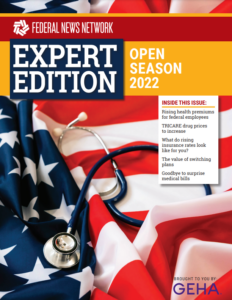Agencies need a way to transfer the knowledge of soon-to-be retiring employees, and one option might be artificial intelligence. Natural language processing (NLP) and automation are some of the technologies agencies are considering both to cope with an aging-out of the federal workforce, and to respond to new employee expectations resulting from the pandemic.
About half of NASA’s workforce will be eligible to retire in the next five years. That represents a lot of institutional knowledge, subject matter expertise and activity that needs to be passed on to the next generation. John Dankanitch, chief technologist at NASA Marshall Space Flight Center, said natural language process can help, specifically by making that expertise searchable.
“We have just thousands and thousands of documents. As I mentioned for geophysics, we have terabytes of data, and they don’t all have the correct metadata in there to be able to make it easy to search,” he said as part of a webinar last week, presented by GovExec. “And so if I’m going to develop some new type of technology or somebody else at another NASA center wants to find out what we’re doing, it needs to be something that’s easy to find in this new ecosystem, especially if you’re bringing on early career folks and you haven’t had a really good succession plan.”
The need to make knowledge more searchable has also inspired agencies to reevaluate their documentation processes, sometimes after many years of no changes. Michael Peckham, acting chief financial officer at the Program Support Center in the Department of Health and Human Services, said this makes staff simultaneously learn how to use their tools and how to make them better.
“It’s just a necessary evil, but it’s a really good one. And it will help you with that knowledge transfer, because people will have a source document that they can go back to. You need to check what your machine is doing,” he said. “You need to babysit, need to look after them. And it’s a great way for people to learn what the tool is doing for you. And then they can start to question from a different angle.”
Embracing change can be hard, both Peckham and Dankanitch acknowledged. Even as a technologist, Dankanitch admitted he still resents iPhone updates that slightly change the interface on his apps or change old functions. But Peckham said using human centered design to make employees privy to software development along the way rather than once it’s finished will ensure better adoption.
If agencies minimize manual processes and use stored data more, it helps to create a reference model “where we’re gathering information from a one-source system and we have a single source of truth. We’re going to limit the ‘after’ questions that we get a lot of times,” Peckham said.
He did not think federal government prepared adequately for the ensuing retirement wave, citing the growing backlog of claims processing at the Office of Personnel Management; although that backlog has been compounded somewhat by the pandemic remote work crunch.
“We are actively working on recruiting right now. We have reclassified all of our position descriptions. It’s one of the requirements within the federal government … We have started advertising very heavily to bring folks in the door,” he said.
In the past, he said, agencies would bring people in and heavily train them up for the job. Now, he said, it is more common to bring in people who are tech savvy already and then teach them the rules and processes.
The pandemic also presented a perfect storm for adopting new technologies which agencies had before only dipped their toes in, Peckham said, and that more shared workspaces or flexibility around who has to come into the office are to be expected. Natural language processing can also help with activities that traditionally took a lot of individual “face time” and therefore may have slowed by the lack of people physically on site every day.
“We have a software development and we’ll have thousands of requirements that need to be checked,” Dankanitch said. “And we’ve been actually able to use NLP to go through our requirements documentation and then automate some of the software checks validation to make sure that we have a product that meets all the requirements, and without as much touch time which significantly brings down the cost.”
But still, not every job can be done over Zoom or with a VPN.
“For example, we have limited opportunities for integration and test of our spaceflight hardware. And so we’ve had tests for band propulsion systems. And if we have COVID restrictions for the number of people in the room, that can be really hard for teaching some of the early career folks,” Dankanitch said. “And that’s really because we have to have the experts in the room actually doing the final assembly, the integration, the testing. If we have a capacity restriction, the people that unfortunately get left out are the future leaders that we’re going to have, and they miss out on that opportunity.”
At the same time, Dankanitch considered the increased receptiveness to employees’ individual needs was a positive to come out of the pandemic. Managers are more aware of their teams’ personal requirements such as working around child care or mental health stressors.
“It helps us to try to understand that work-life balance a little bit better,” he said. “That’s probably why we’re the Best Place to Work in the federal government, for nine years in a row now.”



 With 275 national and regional plans, choosing a health care plan will not be easy and take time, but the benefits are clear. And if nothing else, federal employees and retirees will educate themselves about what their plan offers because insurance matters most when there is an emergency or catastrophe.
With 275 national and regional plans, choosing a health care plan will not be easy and take time, but the benefits are clear. And if nothing else, federal employees and retirees will educate themselves about what their plan offers because insurance matters most when there is an emergency or catastrophe.
